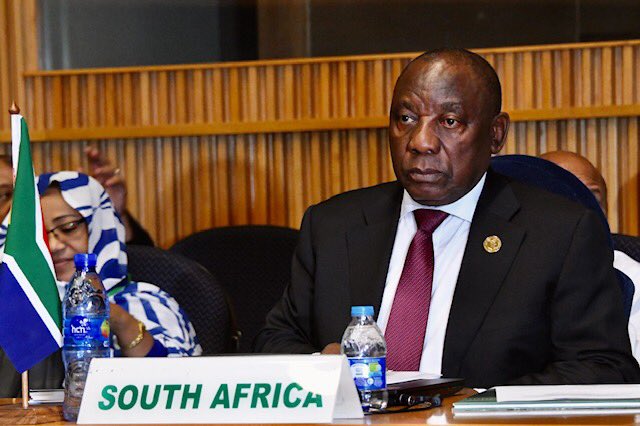PRESIDENT Cyril Ramaphosa is expected to chair the virtual meeting of the Committee of African Heads of State and Government on Climate Change (CAHOSCC) on Tuesday.
“The Committee’s deliberations this week form part of preparations for COP26, the 26th United Nations Climate Change conference, which will be held in the United Kingdom in November 2021,” said the Presidency.
“The meeting will deliberate on the African Green Stimulus Programme and the current status of the international climate negotiations in light of the COVID-19 pandemic, and chart a way forward for Africa’s engagement at COP26.”
The committee will also focus on the implementation of new and on-going climate change programmes and activities by the African Union Commission, and receive updates from the three African Climate Commissions.
The AU Committee on Climate Change meets after the recent virtual Climate Summit of World Leaders convened by the President of the United States of America on 22 and 23 April 2021, where a number of African leaders participated.
The summit reaffirmed that the international community needs to significantly scale up its efforts, raise the level of ambition, and support developing countries with the means to implement climate actions.
Since its establishment, the CAHOSCC has been working with the African Ministerial Conference on Environment (AMCEN) and the African Group of Negotiators on Climate Change (AGN) to advance the Africa Common Position on Climate Change at global fora and negotiations on climate change.
The CAHOSCC has over the years played a key strategic role in coordinating Africa’s Common Position on Climate Change and promoting the unity of Africa on Climate Change issues at Heads of State and Government level.
According to the Center for Strategic and International Studies (CSIS) in Washington, D.C, South Africa is Africa’s biggest emitter of greenhouse gasses.
Globally, South Africa ranks 13th in carbon dioxide emissions, ahead of Brazil, the United Kingdom, and France.
Plants fired by South African coal generate more than 90 percent of the nation’s electricity and more than half its emissions.
The country’s heavy use of coal is resulting in adverse climate conditions. Average temperatures in South Africa are rising twice as fast as globally.
Heat waves, droughts, and wildfires have become more common and costly. Already a “water-stressed” country, South Africa could face severe freshwater shortages this decade.
Ramaphosa is serious about tackling these threats, but he faces a triple dilemma.
- South Africa lost 1.7 million jobs and GDP contracted by 6 percent in 2020. Rapid recovery is President Ramaphosa’s highest priority. In February, he called for a massive rollout of new infrastructure and a rapid expansion of energy generation capacity starting this year. Pre-Covid-19 plans called for a major shift to renewables to meet dramatically lowered emission targets by 2050. However, post-Covid-19 recovery measures point to large carbon-intensive investments, notably in coal and liquified natural gas.
- ESKOM, South Africa’s electricity parastatal, is in a dismal state. Years of neglect and mismanagement have led to rolling blackouts and a current shortfall of 4,000 megawatts (about 10 percent of demand). The goal for ESKOM to close this gap, deliver increased capacity, and cap emissions by 2025 (South Africa’s target before Covid-19) is a tall order.
- South African labor, while supporting of low- or zero-carbon future, is insisting on a “just transition.” Any shift from fossil fuels that does not generate employment offsets will be resisted by the ruling party and its labor allies.
- Inside Politics



